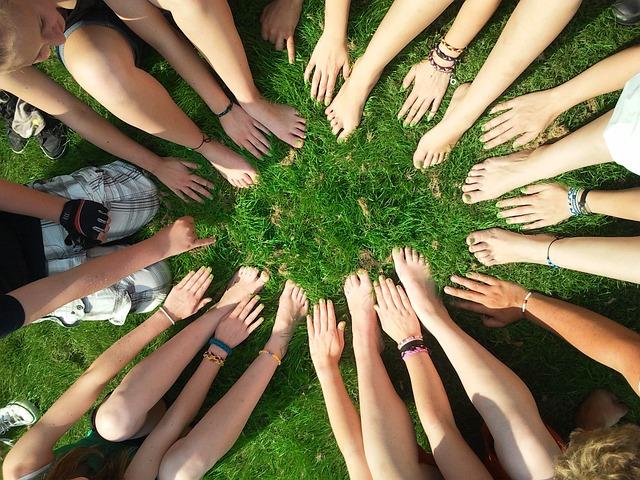In the heart of South Asia lies Pakistan, a nation rich in history and cultural diversity, yet marked by a profound chasm of inequality. From bustling urban centers to the serene landscapes of its rural heartland, the fabric of Pakistani society is woven with threads of opportunity and exclusion, privilege and hardship. As the country grapples with the realities of economic disparity, social stratification, and access to essential resources, the urgency to bridge these divides has never been more critical. This article delves into the multi-faceted layers of inequality in Pakistan, exploring the root causes, examining the lived experiences of those on both sides of the divide, and illuminating the paths toward a more equitable future. Through a nuanced lens, we embark on a journey to understand how collective action, policy reform, and community engagement can create ripples of change, fostering harmony in a society yearning for unity amidst diversity. Join us as we uncover the stories, challenges, and aspirations that illuminate the ongoing struggle for equality in this vibrant nation.
Exploring the Roots of Inequality in Pakistans Social Fabric
The fabric of Pakistan’s society is intricately woven with threads of cultural diversity, yet it is frayed by layers of inequality that often hinder the path toward social cohesion. At the heart of this issue lies a historical backdrop marked by colonialism and socio-economic disparities that perpetuate class divides. Education, healthcare, and access to resources are not universally available, leading to a vicious cycle where poverty begets inequality, and inequality reinforces poverty. The urban-rural divide further complicates this scenario, as urban centers thrive and attract investment, while rural areas remain marginalized and devoid of basic facilities. This disparity fosters resentment and conflict, stifling the potential for nation-building and societal growth.
To understand the roots of these inequalities, one must examine various contributing factors, including caste systems, gender roles, and economic opportunities, which have engrained themselves within communities. Below are key aspects shaping this landscape:
- Caste and Class System: Ancient hierarchies continue to influence life chances.
- Gender Inequality: Women often face double burdens in education and employment.
- Access to Resources: Wealth disparities lead to unequal distribution of basic needs.
Within this context, a focused examination of social policies and their effectiveness is crucial. The table below highlights the disparities in basic services across different socio-economic classes:
| Socio-Economic Class | Education Access | Healthcare Access | Employment Opportunities |
|---|---|---|---|
| Upper Class | High | Excellent | Vast |
| Middle Class | Moderate | Good | Limited |
| Lower Class | Low | Poor | Minimal |
These disparities illuminate the urgent need to bridge the divides within society, ensuring that all citizens have fair access to opportunities and resources, ultimately fostering a more equitable environment for future generations.

Empowering Marginalized Communities Through Education and Employment
In Pakistan, education and employment serve as potent tools for transforming the lives of marginalized communities. By fostering inclusive educational programs tailored to the needs of these groups, we can dismantle the barriers that have historically kept them on the fringes. This requires an emphasis on accessible curricula that resonate with local cultures and values while promoting critical thinking and problem-solving skills. Such initiatives can not only boost literacy rates but also equip individuals with the knowledge needed to navigate the complexities of the job market. The focus should be on creating partnerships between schools, non-profits, and local governments to develop sustainable educational frameworks that prioritize lifelong learning.
Simultaneously, enhancing employment opportunities is crucial to ensuring economic stability for these communities. Strategies such as vocational training centers, mentorship programs, and community-based entrepreneurship initiatives can ignite a sense of agency among individuals who have often felt powerless. By offering tailored job readiness programs that highlight in-demand skills and connecting local talent with employers seeking diversity, we can bridge the economic divide. Here’s a glimpse of potential strategies:
| Strategy | Description |
|---|---|
| Vocational Training | Hands-on training in trades with high demand. |
| Testing for Skills | Assessing skills through certifications for job readiness. |
| Micro-Financing | Providing small loans to encourage entrepreneurship. |
| Community Workshops | Organizing events to share knowledge and build networks. |

Strengthening Social Cohesion: The Role of Community Engagement
Community engagement serves as a vital instrument in bridging divides and promoting inclusivity within Pakistan’s diverse society. By encouraging active participation among residents in communal activities, we can foster a sense of belonging that transcends socioeconomic barriers. This engagement facilitates open dialogues that address grievances and misconceptions, ultimately aiming to unify disparate groups. Key initiatives that foster interaction include:
- Neighborhood improvement projects
- Cultural festivals that celebrate diversity
- Workshops focusing on collaborative problem-solving
- Volunteer programs that benefit the local community
Moreover, effective community engagement relies heavily on creating platforms that empower local voices. Establishing forums and councils allows residents to contribute their ideas, ensuring that policies reflect the needs of all segments of society. These structures can aid in eliminating power imbalances and encourage collective action. A clear understanding of the demographic landscape is crucial; therefore, leveraging data is essential. The following table outlines some demographic factors impacting social cohesion:
| Demographic Factor | Impact on Cohesion |
|---|---|
| Income Inequality | Affects access to resources and opportunities |
| Education Levels | Influences awareness and participation |
| Religious Diversity | Can either promote richness or lead to conflict |
| Urban vs. Rural Divide | Creates perceptions of disparity in services |

Policy Solutions for a More Equitable Future in Pakistan
To create a more equitable future in Pakistan, it is imperative to adopt policy solutions that address the root causes of inequality. This involves not only economic reforms but also social advancements that empower marginalized communities. Key initiatives should include:
- Universal Basic Income (UBI): Implementing UBI can provide a safety net, ensuring that even the most disadvantaged individuals have access to basic resources.
- Education Equity: Allocating resources to improve access to quality education for all, particularly in remote or underserved areas, can help break the cycle of poverty.
- Healthcare Accessibility: Expanding public health services to guarantee affordable healthcare for every citizen is crucial for ensuring that health does not determine wealth.
- Legal Reforms: Strengthening anti-discrimination laws will work towards protecting the rights of minorities and marginalized groups.
Moreover, fostering inclusive economic growth through community-based programs can empower local populations and reduce disparities. Creating spaces for dialogue among various societal groups can help identify their needs and develop tailored solutions. Consideration should also be given to:
- Microfinance Initiatives: Supporting small businesses owned by economically disadvantaged groups can stimulate local economies.
- Women Empowerment Initiatives: Programs aimed at enhancing women’s participation in the workforce are essential for achieving gender equality.
- Environmental Justice Policies: Integrating sustainable practices ensures that vulnerable communities are protected from the adverse effects of climate change.
Concluding Remarks
In a nation as vibrant and diverse as Pakistan, the journey toward bridging divides and addressing inequality is both intricate and essential. As we have explored, the fabric of society is woven with threads of varying colors, each representing unique experiences, challenges, and aspirations.
The path forward will require a collective effort—a collaboration among government, civil society, and citizens—to foster understanding and dismantle the barriers that perpetuate inequality. By prioritizing education, enhancing economic opportunities, and promoting inclusivity, we can pave the way for a future where everyone, regardless of their background, can thrive.
As we close this exploration of Pakistan’s social landscape, let us carry forward the conviction that change is not only possible but achievable. With empathy and determination, we can transform divides into bridges, ensuring that the promise of a more equitable society becomes a reality for all. The time for action is now; every step taken is a step closer to unity and progress. In the words of the poet, “Hope is the thing with feathers that perches in the soul.” Let us nurture that hope and work together toward a more equitable tomorrow.



